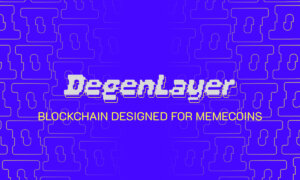 Balancing mass adoption and self-sovereignty in crypto ETFs
Balancing mass adoption and self-sovereignty in crypto ETFs Balancing mass adoption and self-sovereignty in crypto ETFs
Understanding the balance of decentralization and liquidity is crucial for future crypto governance and adoption.

Cover art/illustration via CryptoSlate. Image includes combined content which may include AI-generated content.
The following is a guest post by Jonathan Yark.
The introduction of the Bitcoin and Ether ETFs mark a critical turning point for the digital asset industry, signifying crypto’s recognition as a legitimate asset class by traditional markets. These ETFs have bridged the gap between traditional market structures and the once “Wild West” of crypto, bringing much-needed liquidity and fostering healthier market dynamics. As Bitcoin, Ether, and future digital asset ETFs gain traction, we are poised to witness transformative growth in this sector.
The Balancing Act
While greater awareness due to ETF approval is positive, the ETFs pose challenges to core crypto principles like self-sovereignty, decentralization, and blockchain-based proof systems. For instance, while ETFs offer accessibility and liquidity, they also centralize control over assets, potentially undermining the decentralized ethos that underpins cryptocurrencies.
This shift raises important questions about the future of crypto governance and the balance between accessibility and decentralization. It is vital that we find a middle ground that does not destroy the foundation of Bitcoin and other digital assets.
Yet, mass adoption has always been hindered by the complexities and perceived risks of engaging directly with crypto platforms. Data shows that traditional-based individuals prefer the convenience of using their existing brokerage accounts to invest in Bitcoin or Ether, despite higher costs and the forfeiture of self-custody. Ether, for example, requires navigating onboarding solutions and acquiring gas fees, which companies like Coinbase are trying to simplify with “gasless” transactions.
This juxtaposition of traditional markets, which have fine-tuned onboarding processes, versus crypto markets highlights a critical point. Traditional markets have successfully streamlined the onboarding process, making it easy and convenient for investors to participate. In contrast, crypto markets are still evolving in this regard, facing challenges such as complex onboarding procedures and high transaction fees.
However, the increased awareness and inflows from ETF approval present a unique opportunity. We should seize this moment to dive in and prioritize mass adoption while staying true to the principles that have brought us this far. Understanding that the principle of decentralization as a hedge to sovereignty alongside blockchain innovations is the very reason why traditional markets are aggressively expanding into the space.
Finding a Middle Ground to Adoption
In considering these challenges, an approach that includes policy development, regulatory clarity, and investor education amid crypto-native integration and innovation is not just desirable but necessary.
For Traditional Players
Implementing regulations that mandate self-custody options for ETF investors ensures they can transition their holdings to personal wallets if desired. This approach respects the decentralization ethos by allowing investors to retain control over their assets while still benefiting from the liquidity and accessibility of ETFs. Without such measures, the very foundation of what makes crypto unique is at risk of being eroded by traditional financial mechanisms.
Establishing clear guidelines for decentralized applications (dApps) can further encourage innovation while protecting investors. By outlining specific compliance requirements for DeFi projects, regulators can create a safer and more predictable environment for innovation.
This balance between regulation and decentralization fosters a healthier ecosystem for both new and experienced participants. Regulatory bodies must act with both precision and vision, understanding that over-regulation can stifle innovation just as much as under-regulation can lead to chaos and fraud.
Educating investors about the benefits and risks of both ETFs and self-custody is also crucial. Awareness campaigns and educational programs can help investors make informed decisions. Providing resources and tools for self-custody, along with transparent information about the nature of ETF investments, empowers investors to choose the best option for their needs. This approach enhances investor confidence and engagement, promoting a more informed and resilient market. The industry should take proactive steps to demystify the process of self-custody and illustrate its long-term advantages over relinquishing control to third parties.
For Crypto Natives
Developing solutions that facilitate easy transitions between ETF investments and self-custody can help maintain the balance. Platforms that allow seamless movement of assets between centralized exchanges, ETFs, and decentralized wallets provide investors with flexibility and control. This technological integration supports a more dynamic and user-friendly ecosystem, making it easier for investors to navigate the crypto landscape.
To further improve crypto native adoption, simplifying user interaction with blockchain technology is crucial. Solutions like Coinbase’s USDC transactions on Base without gas fees and Near’s user-friendly wallet identities reduce the learning curve, making crypto more accessible. Near’s wallet architecture that mimics web2, with simple wallet identities like “acheron.near” instead of 40-character hexadecimal strings, significantly enhances user experience and accessibility. The crypto community must push for more intuitive interfaces that align with user expectations from traditional financial systems.
Transparency, in the wake of incidents like the FTX collapse, has become paramount. Tools such as Arkham, Nansen, and Bubble Maps promote transparency, ensuring a safer environment for users. Enhanced transparency builds trust, which is essential for widespread adoption. By providing clear and reliable information about transactions and project health, these tools empower users and protect them from potential risks. There should be an industry-wide standard for transparency that projects adhere to, reducing the likelihood of future collapses and frauds.
Utility tokens must offer tangible benefits like governance, payments, or other functions that drive engagement. Thoughtfully designed token economies can attract and retain participants, enhancing the overall ecosystem. For example, utility tokens that provide voting rights in decentralized organizations or offer rewards for network participation can incentivize user engagement and foster a vibrant community. The design of these token economies must be robust and thoughtfully constructed to ensure they deliver real value and sustainability.
Future Frontier
Regulation tends to trail the pace of innovation, and crypto is no exception. The key, however, is that regulatory agencies should not be overbearing and restrictive of all growth, which unfortunately has been the reality for the industry over the past four-plus years.
Fortunately, a handful of favorable rulings, including the major questions doctrine, will likely lead to a less aggressive SEC and permit healthy lawmaking to properly regulate the industry. We have also taken notice of Senator Lummis’ leadership alongside President Trump in the creation of a regulatory framework that may open the US to crypto and a Bitcoin Strategic Reserve. Both should be considered highly bullish for the industry.
There is a lot of hope for what the crypto industry can be both in the United States and globally in the future. Many of the historical pressures on the industry, such as predatory actors, poor transparency, and regulatory uncertainty, are slowly being removed from the equation.
While we have made dramatic progress over the last few years, many necessary steps remain to engage the next wave of crypto adoption. The ETF approvals are a dramatic step forward in this goal as it opens the industry to traditional markets.
Continuing to focus on transparency, chain abstraction, and utility will help even further. Through 2024 and onward, we expect further expansion of crypto-based ETFs for coins and projects that exhibit exemplary adoption and decentralization. This ongoing process will help drive new capital and diversify traditional risk, improving market liquidity and dynamics overall.



 CoinGlass
CoinGlass 


 Farside Investors
Farside Investors 


















































































